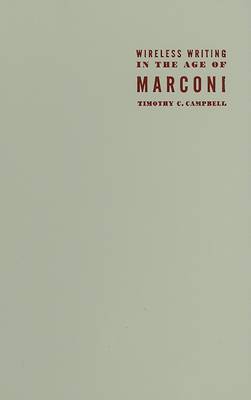This book correlates Italian and European modernism with early wireless technology. Wireless technology has become deeply embedded in everyday life, but its impact cannot be fully understood without probing the contributions of the Italian inventor Guglielmo Marconi (1874-1937), who ushered in the beginning of wireless communication. Marconi produced and detected sound waves over long distances, using the curvature of the earth for direction, and laid the foundations for what we know as radio - the original mobile, voice-activated, and electronic media community. Timothy C. Campbell demonstrates that Marconi's invention of the wireless telegraph was not simply a technological act but also had an impact on poetry and aesthetics and linked the written word to the rise of mass politics. Reading influential works such as F. T. Marinetti's futurist manifestos, Rudolf Arnheim's 1936 study "Radio", writings by Gabriele D'Annunzio, and Ezra Pound's "Cantos", Campbell reveals how the newness of wireless technology was inscribed in the ways modernist authors engaged with typographical experimentation, apocalyptic tones, and newly minted models for registering voices.
"Wireless Writing in the Age of Marconi" presents an alternative history of modernism that listens as well as looks and bears in mind the altered media environment brought about by the emergence of the wireless.
- ISBN13 9780816644414
- Publish Date 1 January 2006
- Publish Status Active
- Publish Country US
- Imprint University of Minnesota Press
- Format Hardcover
- Pages 280
- Language English
